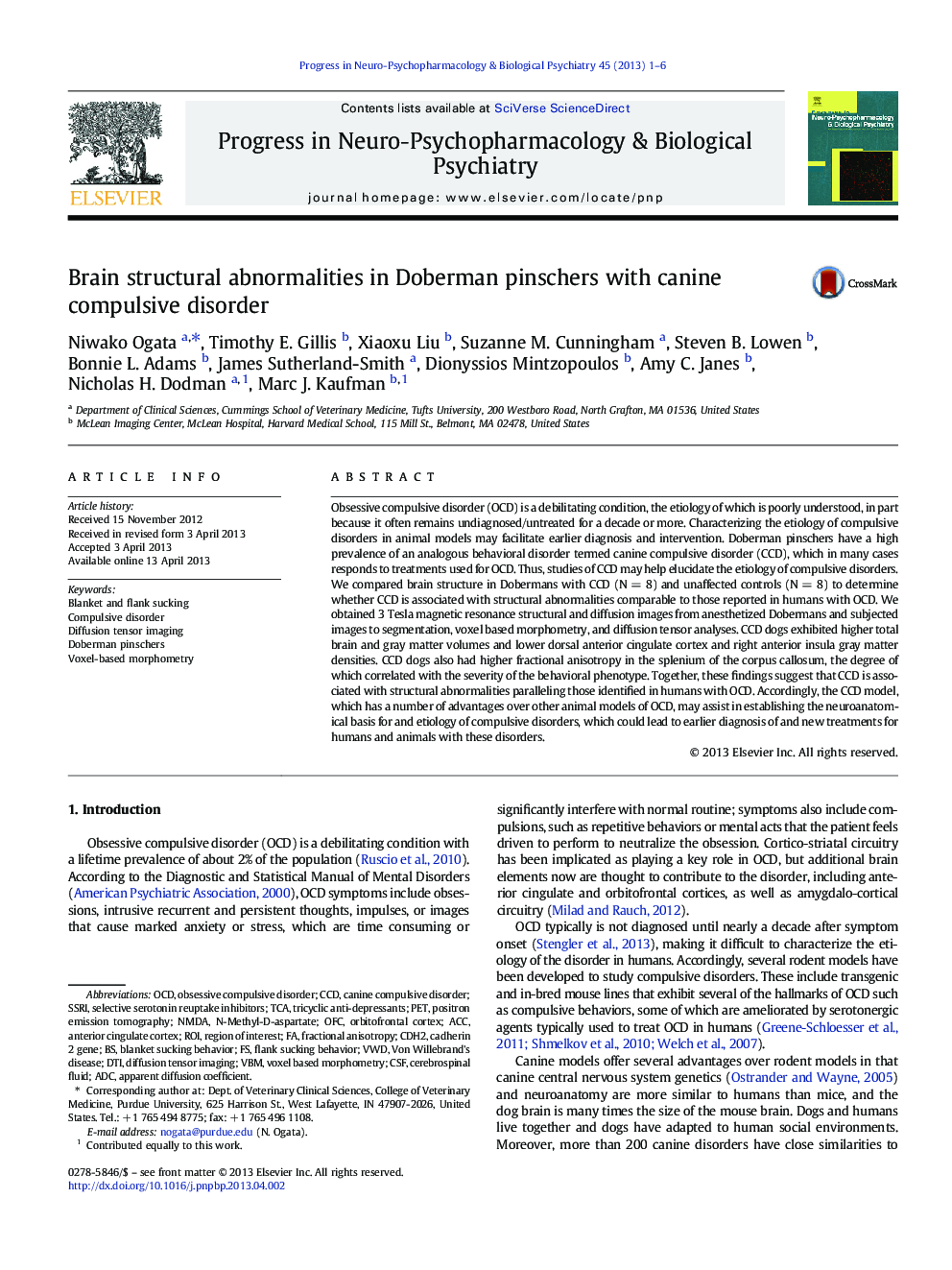| کد مقاله | کد نشریه | سال انتشار | مقاله انگلیسی | نسخه تمام متن |
|---|---|---|---|---|
| 5844786 | 1561049 | 2013 | 6 صفحه PDF | دانلود رایگان |
- Parallels exist between canine compulsive disorder (CCD) and human anxiety disorders.
- We used MRI to compare brain structure in Dobermans with CCD to healthy controls.
- CCD dogs exhibited brain abnormalities similar to those in humans with OCD.
- The Doberman CCD model may be useful for studying anxiety disorder etiology.
Obsessive compulsive disorder (OCD) is a debilitating condition, the etiology of which is poorly understood, in part because it often remains undiagnosed/untreated for a decade or more. Characterizing the etiology of compulsive disorders in animal models may facilitate earlier diagnosis and intervention. Doberman pinschers have a high prevalence of an analogous behavioral disorder termed canine compulsive disorder (CCD), which in many cases responds to treatments used for OCD. Thus, studies of CCD may help elucidate the etiology of compulsive disorders. We compared brain structure in Dobermans with CCD (NÂ =Â 8) and unaffected controls (NÂ =Â 8) to determine whether CCD is associated with structural abnormalities comparable to those reported in humans with OCD. We obtained 3Â Tesla magnetic resonance structural and diffusion images from anesthetized Dobermans and subjected images to segmentation, voxel based morphometry, and diffusion tensor analyses. CCD dogs exhibited higher total brain and gray matter volumes and lower dorsal anterior cingulate cortex and right anterior insula gray matter densities. CCD dogs also had higher fractional anisotropy in the splenium of the corpus callosum, the degree of which correlated with the severity of the behavioral phenotype. Together, these findings suggest that CCD is associated with structural abnormalities paralleling those identified in humans with OCD. Accordingly, the CCD model, which has a number of advantages over other animal models of OCD, may assist in establishing the neuroanatomical basis for and etiology of compulsive disorders, which could lead to earlier diagnosis of and new treatments for humans and animals with these disorders.
Journal: Progress in Neuro-Psychopharmacology and Biological Psychiatry - Volume 45, 1 August 2013, Pages 1-6
